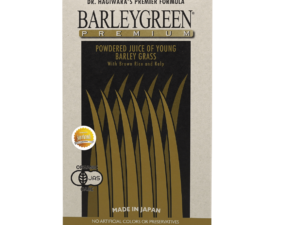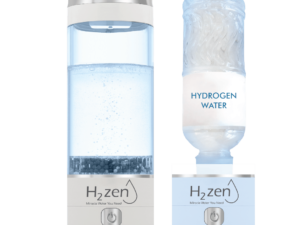Gut health has become a major focus for many people, and the demand for probiotics and supplements continues to rise. But is it safe to mix them? Wellness Group, a trusted name in health and wellness, explores this common concern.
Combining different supplements may affect their effectiveness. Some pair well, while others could interfere with absorption. Timing and dosage also play a crucial role in maximizing benefits.
This article breaks down key interactions, best practices, and expert advice. For personalized guidance, Wellness Group offers consultations via WhatsApp at +60123822655.
Key Takeaways
- Mixing probiotics with certain supplements may impact effectiveness.
- Proper timing enhances absorption and benefits.
- Wellness Group provides expert advice on supplement combinations.
- Personalized recommendations ensure optimal gut health.
- Contact Wellness Group for tailored supplement guidance.
What Are Probiotics and How Do They Work?
The human gut hosts trillions of microorganisms that shape overall wellness. Among them, probiotics—live good bacteria—play a starring role. Found in fermented foods like yogurt and kimchi, these tiny allies crowd out harmful bacteria to maintain equilibrium.
How Probiotics Support Gut Health

Click to LEARN MORE
These microorganisms ferment fiber and complex compounds, aiding nutrient absorption. A balanced gut microbiome also strengthens the immune system and reduces inflammation.
Common Probiotic Strains and Their Benefits
Not all strains work the same. Key types include:
- Lactobacillus rhamnosus GG: Eases bloating and gas.
- Bifidobacterium lactis HN019: Supports regularity.
Over 1,000 bacterial species interact in the gut, each with unique benefits. Choosing the right strains ensures targeted support for digestion and beyond.
Can You Take Probiotics With Other Supplements Safely?
Strategic combinations enhance gut health without compromising effectiveness. While most supplements coexist harmoniously, timing and type matter.

Probiotics and Vitamins: A Seamless Pair
Live cultures and vitamins rarely interact negatively. They operate via separate pathways in the body. For example, fat-soluble variants (A, D, E, K) absorb better with meals, while probiotics thrive in empty stomachs.
Minerals and Probiotics: Key Considerations
Iron or zinc supplements might slow probiotic activity if taken simultaneously. Spacing doses by 2–3 hours prevents competition for absorption.
| Supplement | Interaction with Probiotics | Recommendation |
|---|---|---|
| Omega-3s | Enhances delivery | Take together |
| Multivitamins | No interference | Any time |
| Iron/Zinc | May reduce absorption | Space doses |
Expert Insights on Synergy
Dr. Will Bulsiewicz’s research highlights omega-3s’ role in boosting probiotic survival.
“Healthy fats create an ideal environment for live cultures to thrive.”
Avoid pairing probiotics with hot drinks, which kill delicate strains. For personalized regimens, consult a healthcare provider. Learn more about daily probiotic use for sustained benefits.
Probiotics and Antibiotics: Timing and Considerations
Balancing gut health while on antibiotics requires careful planning. These medications target harmful bacteria but often wipe out beneficial ones too. Strategic probiotic use helps maintain the gut microbiome during and after treatment.
Why Spacing Matters
Taking probiotics too close to antibiotics reduces their effectiveness. Experts recommend waiting 2–4 hours after a dose. This gap prevents live cultures from being neutralized.
Clinical studies show probiotics lower antibiotic-associated diarrhea risk by 37%. Strains like Lactobacillus acidophilus and Bifidobacterium lactis are clinically proven to support gut resilience.
Rebuilding Gut Health Post-Treatment
Continue probiotics for 1–2 weeks after finishing antibiotics. This helps restore microbial diversity. Key tips:
- Choose multi-strain formulas for broader protection.
- Check expiration dates to ensure live cultures are active.
- Pair with fiber-rich foods to fuel probiotic growth.
| Scenario | Recommendation |
|---|---|
| During antibiotics | Space doses 4 hours apart |
| After antibiotics | Continue probiotics for 2 weeks |
| For immune system support | Combine with vitamin C |
For personalized healthcare advice, consult a professional. Small adjustments in timing can make a big difference in gut recovery.
Key Benefits of Probiotics for Gut Health
Modern research highlights how probiotics transform digestive and immune health. These live cultures deliver targeted benefits, from easing discomfort to fortifying defenses. Below, explore three science-backed ways they optimize gut health.

Supporting Digestion and Reducing Bloating

Click to LEARN MORE
Probiotics break down complex fibers and lactose, reducing gas and bloating. Strains like Lactobacillus acidophilus improve nutrient absorption, while Bifidobacterium eases IBS symptoms. A 2023 study linked regular use to 40% fewer digestive disruptions.
Boosting the Immune System
Seventy percent of the immune system resides in the gut. Specific strains, such as Bifidobacterium lactis BI-04, enhance white blood cell activity. Clinical trials show probiotic users experience 25% shorter cold durations.
Restoring Gut Balance After Illness
Antibiotics or infections often deplete good bacteria. Probiotics repopulate the microbiome, accelerating recovery. Pairing them with prebiotic fibers (e.g., bananas, garlic) fuels bacterial growth for lasting gut health.
| Strain | Primary Benefit | Secondary Effect |
|---|---|---|
| Lactobacillus rhamnosus | Reduces bloating | Strengthens gut lining |
| Bifidobacterium longum | Supports digestion | Lowers inflammation |
| Saccharomyces boulardii | Prevents diarrhea* | Enhances nutrient uptake |
*Particularly post-antibiotics or food poisoning.
For strains that specifically reduce bloating, consult tailored recommendations. The right combination unlocks benefits beyond basic digestion, fostering holistic wellness.
Choosing the Right Probiotic Supplement
Selecting an effective probiotic supplement requires understanding key quality markers. With countless products available, identifying truly beneficial formulas makes all the difference. These guidelines help navigate the options for optimal gut support.
Essential Features of Premium Probiotics
Look for capsules with enteric coatings—they survive stomach acid better than gummies or powders. Third-party testing seals verify high-quality standards, while “live and active cultures” labels ensure viable microorganisms.
Refrigerated options often maintain potency longer than shelf-stable versions. Wellness Group’s curated selection features clinically validated brands that meet these rigorous criteria.
Decoding CFUs and Strain Diversity
Colony-forming units (CFUs) indicate live bacteria counts. For general wellness, 10-50 billion CFUs strike the right balance. Therapeutic needs may require 50+ billion units.
Effective strains target specific concerns:
- Lactobacillus for vaginal and urinary health
- Bifidobacterium for digestive regularity
- Saccharomyces boulardii for traveler’s diarrhea
Avoid proprietary blends with undisclosed strains. Instead, choose products listing 5-10 verified strains for comprehensive dietary support. This approach strengthens both gut and immune system functions.
Expert Tips for Taking Probiotics Effectively
Maximizing the effectiveness of live cultures involves smart timing, strategic food pairings, and avoiding common pitfalls. Small adjustments in daily routines can significantly boost gut health results.
Optimal Timing for Maximum Benefits
Morning or evening? Research suggests taking probiotics 30 minutes before breakfast works best. This way ensures survival through stomach acid when levels are lowest.
Nighttime dosing also shows promise for those with sensitive digestion. Consistency matters more than exact hours—choose a schedule that fits individual routines.
Food Pairings That Boost Results
Certain foods act as fuel for beneficial bacteria. Prebiotic-rich options like bananas, garlic, and asparagus create an ideal environment. Oats and apples provide soluble fiber that enhances probiotic activity.
Avoid pairing with coffee or hot tea. Temperatures above 115°F can destroy delicate strains. Cold water or room-temperature beverages are safer choices.
Critical Mistakes That Reduce Effectiveness
Many people unknowingly sabotage their probiotic regimen. Common mistakes include:
- Assuming all yogurts contain live cultures (check for “active” labels)
- Doubling doses abruptly, which may cause temporary bloating
- Stopping too soon—3-6 months of consistent use shows measurable improvements
Clinical studies confirm these practices impact outcomes. For deeper insights, explore probiotic research from trusted sources.
“Timing and food synergy transform probiotics from good to great for gut health.”
Special populations—like infants or immunocompromised individuals—should consult doctors first. With proper way of use, these microbial allies deliver transformative benefits.
Conclusion
Pairing probiotics with supplements supports gut health when timed strategically. Most combinations work well if spaced properly. Choosing diverse strains and adequate CFUs maximizes benefits.
For personalized guidance, Wellness Group’s experts offer tailored advice. Reach out via WhatsApp at +60123822655 during business hours:
- Monday-Friday: 9:30 am–6:30 pm
- Saturday-Sunday: 10 am–5 pm
Prioritizing gut health lays the foundation for overall wellness. Small adjustments in timing and selection make a big difference. Start today for lasting health benefits.
FAQ
What are probiotics?
Probiotics are live microorganisms, often called “good bacteria,” that support digestive health and immune function. They help maintain a balanced gut microbiome, which is crucial for overall wellness.
How do probiotics support gut health?
Probiotics promote digestion, reduce bloating, and help restore gut balance. They compete with harmful bacteria, strengthen the intestinal barrier, and may ease symptoms of irritable bowel syndrome.
Can probiotics be taken with vitamins?
Yes, most probiotics can be safely combined with vitamins. However, spacing them a few hours apart may improve absorption, especially when taking fat-soluble vitamins like A, D, E, or K.
Should probiotics be taken with minerals like iron or calcium?
Some minerals, such as iron, may reduce probiotic effectiveness. Taking them at different times of the day ensures both are absorbed properly without interference.
Why is timing important when taking probiotics with antibiotics?
Antibiotics can kill both harmful and beneficial bacteria. Taking probiotics a few hours after antibiotics helps replenish good bacteria and may reduce antibiotic-associated diarrhea.
What foods enhance probiotic effectiveness?
Fermented foods like yogurt, kefir, and sauerkraut naturally contain probiotics. Prebiotic-rich foods, such as bananas and oats, also help nourish beneficial gut bacteria.
What should you look for in a high-quality probiotic supplement?
A good probiotic includes multiple strains like Lactobacillus and Bifidobacterium, high CFU counts (10-50 billion), and delayed-release capsules to survive stomach acid.
What’s the best time to take probiotics?
Taking probiotics on an empty stomach, preferably in the morning or before bed, helps maximize survival rates as stomach acid levels are lower.






